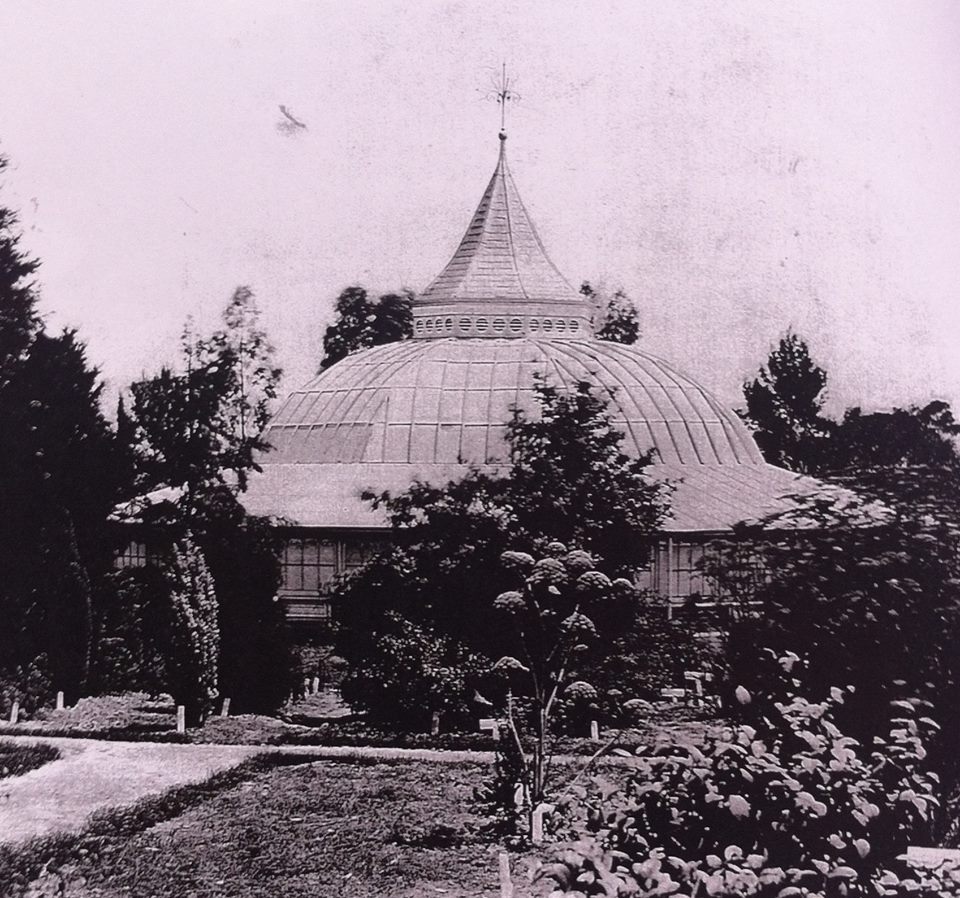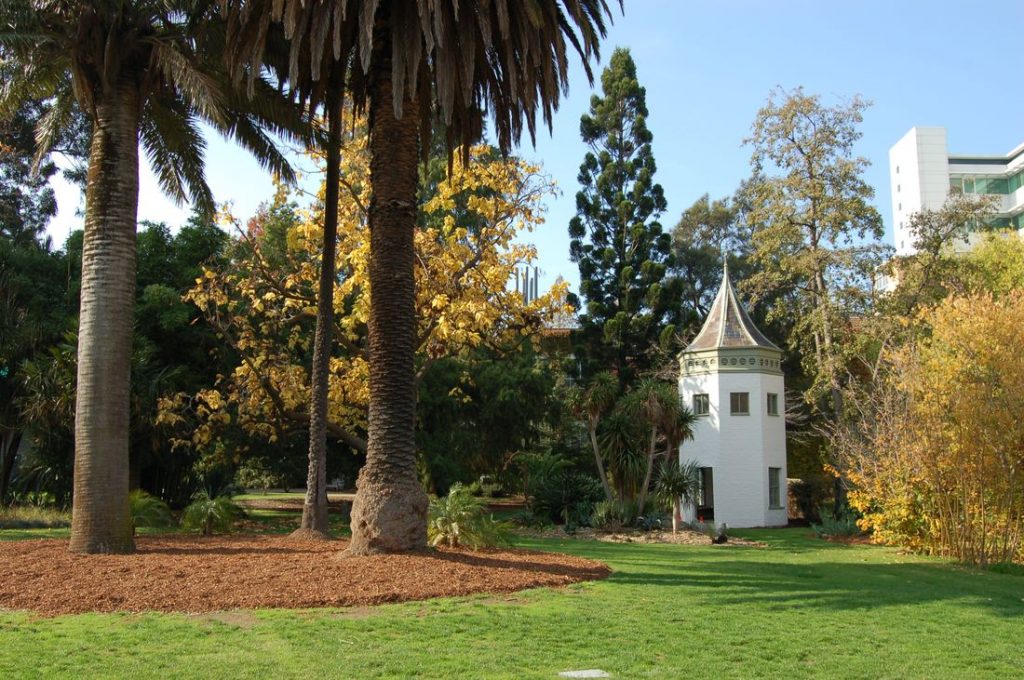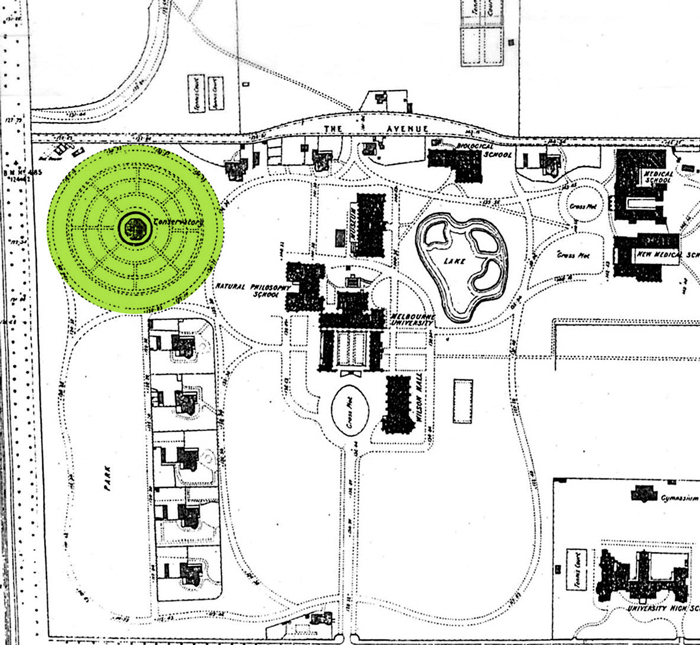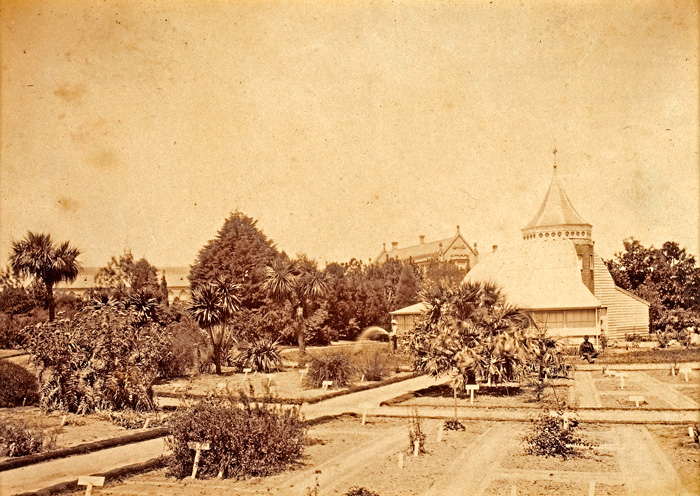Threat to System Garden at the University of Melbourne

The National Trust has written to the University of Melbourne expressing serious concerns regarding proposed works to System Garden, the ‘oldest and only remaining garden that operates within systematic guidelines in Australian or even the Southern Hemisphere’ (source: University of Melbourne publication Voice (Vol. 6, No. 9, 2010). As reported by The Age in late November, it is believed that the University has plans to ‘expand the footprint of the neighboring veterinary and agricultural science building next year, [which] will eat into the north-west corner of the garden for about 10 per cent of the one-acre site.’ To read our objection letter in full, click here.

The System Garden as it appears today. All that remains of the original central conservatory is the former potting shed. Image source: Film Victoria
The System Garden was established in 1856, only three years after the founding of the University of Melbourne in 1853, with the Garden’s systematic arrangements of plants by taxonomic order used as a practical teaching space for generations of academics and students. To learn more about the history and significance of the System Garden, visit the University of Melbourne’s website here.
The National Trust considers the garden to be highly significant to the State of Victoria, and worthy of protection in response to any future works proposed in the vicinity of the site. We firmly believe that the open space of the garden should not be diminished as a result of any adjacent works, and that no plants should be removed or impacted.
The original circular extent of the garden has been significantly impacted over the past 100 years, including as a result of the extension of the Old Botany Building. As outlined in the The University of Melbourne’s Voice publication (Vol 6, No. 9, 2010), ‘originally it was a large circular area encompassing around 7.5 hectares. Building development has left only a little less than 2 hectares.’ While undergoing significant loss over the past century, the National Trust believes the original form of the garden can still be appreciated through the existing open space. As such, it is considered that any loss of this space, especially a loss of 10%, would have a detrimental impacts on the heritage significance of the garden.

MMBW plan of the University of Melbourne’s Parkville campus 1896, with the approximate extent of the original Botanical Garden (System Garden) indicated. Source: University of Melbourne

System Garden with partially completed conservatory, c.1875. Source: University of Melbourne Archives.
The National Trust also notes that in August 2016 the System Garden was nominated to Heritage Victoria for inclusion on the Victorian Heritage Register. It is believed that an assessment as part of this process will be made public shortly. The National Trust supports the further documentation and assessment of the garden, and strongly believes that this should inform any future decision-making in relation to development which may impact on the site.
The National Trust has two trees listed on our Register of Significance Trees within the System Garden, a Chilean Wine Palm (Jubaea chilensis) and an Osage Orange (Maclura pomifera), both over 130 years old. These trees are considered to be of State significance, due to their horticultural, social and aesthetic qualities.

Chilean Wine Palm within the System Garden, listed on the National Trust Register of Significant Trees. This palm is significant at State level as a mature example of the species with large physical dimensions. Mature Chilean Wine Palms are rare in cultivation in Victoria with less the 25 known.

Osage Orange within the System Garden, listed on the National Trust Register of Significant Trees. This is a large specimen notable for being a mature tree with a single trunk – the majority of the species is multi-trunked. The tree was planted by Frederick McCoy c. 1865. Photograph by Homewood Consulting, 2012.
+ There are no comments
Add yours